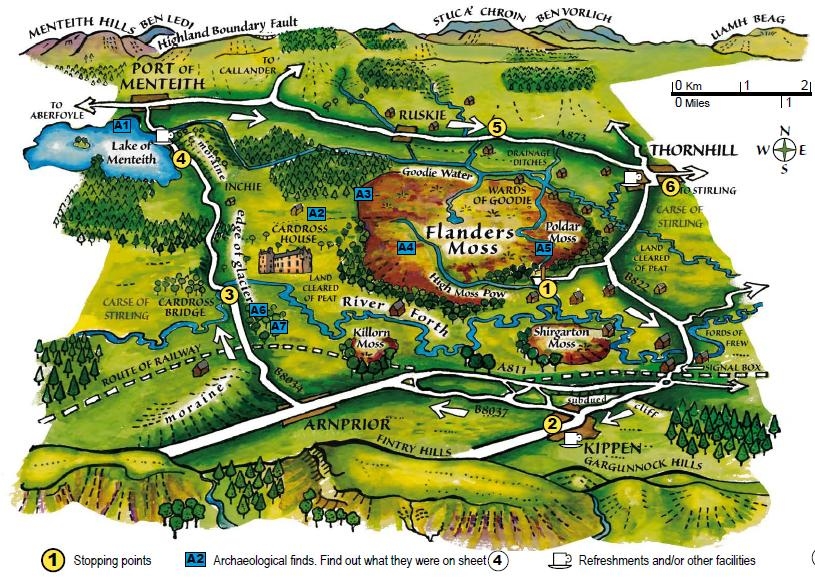During the last Ice Age, around 22,000 years ago, sea levels were lower than today. Vast ice sheets covered Scotland, pushing the land down.
15,000 years ago, the glaciers melted, and the sea rose faster than the land, flooding the Carse of Stirling.
Slowly, the land rose and the sea retreated, leaving a layer of estuarine mud.
Plants, then mosses colonised this, eventually forming a layer of peat.
Then, around 12,000 years ago, the climate chilled again. Glaciers formed in the Highlands - an event known as the ‘Loch Lomond Readvance’.
9,000 years ago rising sea levels again extended the Forth Estuary into the Carse of Stirling and new mudflats covered the land.
When the sea finally retreated more peat formed, creating a network of bogs that stretched across the Carse of Stirling.

Bog mosses started to grow on the wet waterlogged clay soils, formed when the Carse of Stirling was under the sea. Bog mosses kept the ground saturated with water. What they created is like a giant compost heap but one where the dead plant material keeps building up rather than rotting away. This dead plant material, peat, eventually formed domes.
Today these peat domes rise above the land. This is why Flanders Moss is known as a raised bog. The peat is still being laid down at a rate of a millimetre a year. In comparison your fingernails grow 36 times faster. A peat dome is a "many thousands" of years old time capsule which scientists study to measure past changes in climate, sea levels, plant life and human activity.
In the past 250 years, humans have considerably reduced the extent of these bogs.
However, Flanders Moss is still the largest remaining intact raised (dome-shaped) bog in Britain.
Information given by Flanders Moss Reserve Manager, Beta Centre, University of Stirling.
To claim this cache please answer the following questions.
More information can be found if you visit the nearby traditional Flanders Moss cache.
1. If Sphagnum Moss builds up at a rate of 1 mm per year and has done so for 8,000 years, estimate how thick the layer of peat that is Flanders Moss should be.
From the viewpoint at the cache coordinates, visually estimate the height of the raised bog that is Flanders Moss. Does this estimate come close to your initial calculation?
If not, what local or regional environmental factors (biological, geological and sociological) might explain the discrepancy?
2. Peat bogs are said to have the capacity to "fix" more carbon from the atmosphere than other ecosystems. In your opinion, is this reason enough to preserve Flanders Moss, or would its use as a source of fuel be more beneficial to our society in our professed goal to become energy independent?
3. In your opinion should "peat" be classed as a fossil fuel or a biofuel. At what point does would you say it transforms from an organic soil into what we would call a rock?
In other words where does peat end and lignite begin? Has any of the peat in Flanders Moss, especially along the lower margins of the raised bog, reached this point?
4. Look around the carse. What geological barriers or features have created the perfect environment in which a raised bog can form?
In your opinion, if left to its own devices would the raised bog of Flanders Moss continue to grow and spread across the carse reaching its former glory or has man or time altered the landscape enough to halt this natural progression?
Please do not include your answer in your log, instead email me with your findings.
Head your email with - Flanders Moss Earth Cache and then give the required answers.
If I do not receive the answer you may have your log deleted.....
Educational guidelines for Earthcaches are set by Geocaching.com and GeoSociety.org (Earthcache) and have to be adhered to.